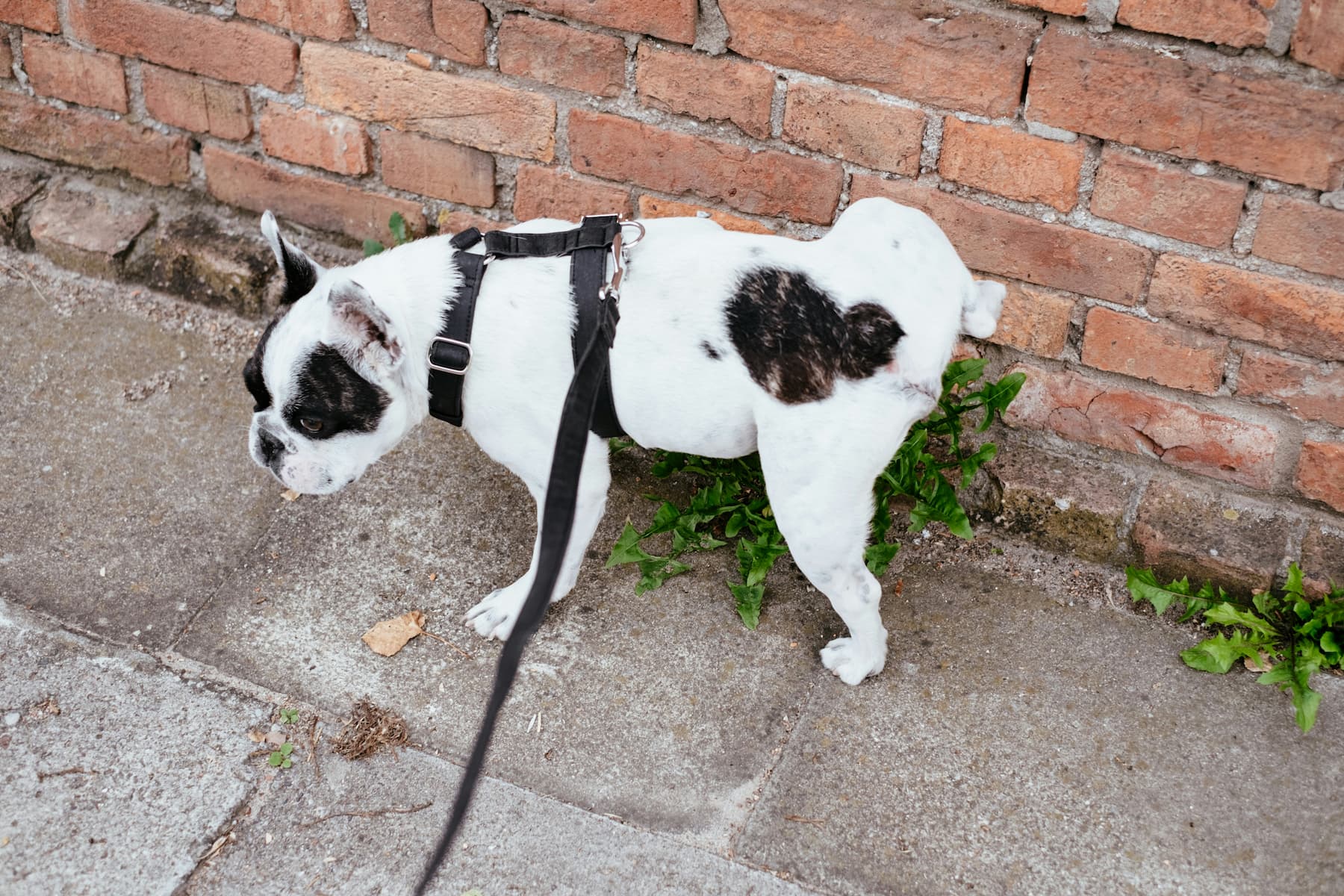It’s starting to become all too common: you leave the room, even if it’s just for a few brief seconds, and the next thing you know, your dog is whining when you’re leaving the room. He is crying as if you have just dropped him off who knows where, never to come back.
If this scene sounds familiar and you’re nodding your head in agreement, rest assured, you are not alone. Countless dog owners have dogs who cry the moment they leave the room, even if they just go to the bathroom. What’s up with these dogs? And most of all, how can we help them?
Not to Be Underestimated
First, it’s important to realize that the fact that your dog is following you around shouldn’t be taken lightly. Sure, it’s true that dogs are very social animals who are loyal to us and are happiest when we are home with them. But, excessive attachment can turn into a major problem if not tackled early and, therefore, nipped in the bud.
This major problem is known as separation anxiety.
What Is Separation Anxiety, and How Does It Affect Dogs?
Separation anxiety takes place in dogs who develop a dysfunctional attachment to a particular person. Your dog keeps whining when you’re leaving the room due to the dog’s inability to emotionally cope with his owner’s absence.
Affected dogs develop a variety of signs that go from sheer panic to acting withdrawn and depressed. The most common signs include whining, howling, barking, having pee or poop accidents in the home, and drooling. There might also be panting, shaking, pacing, destructive behaviors, loss of appetite, and attempts to escape.
These dogs are not seeking revenge or acting out of spite because their owners left them home alone. Rather, these dogs are genuinely suffering—they are anxious and haven’t learned how to cope with their feelings.
Some Early Signs
Separation anxiety in most cases doesn’t happen out of the blue; it’s rather a progressive condition that takes place in small increments that gradually worsen over time.
It may start with a dog who begins to struggle with being left alone. He may start whining when left in a crate or when he’s left alone in the yard and doesn’t see you.
Some early signs of the beginning of a separation-related disorder include:
- A dog who follows you from room to room stays behind the bathroom door every time you must do business
- Is overly attentive to every move you make, and
- Cries when you leave a room where he can’t follow you.
Don’t ignore these signs and assume that you just own a clingy “Velcro dog.” Instead, take notice and listen to what your dog is trying to tell you. Most likely, this is a plea for help in teaching him to become more independent and start enjoying his own company more.

Did You Know?
According to the University of Saskatchewan Undergraduate Research Journal (Volume 4, Issue 2, 2018), it is estimated that separation anxiety is prevalent in between 20% and 40% of all dogs that are treated by animal behavior specialists in North America (Simpson, 2000, as reviewed by Thielke and Udell, 2017).
How to Help a Dog Who Cries When You Leave the Room
While it’s true that dogs are social animals who give us affection and loads of unconditional love, they should learn how to cope with us leaving the room from an early age. The earlier, the better. If your dog is forever whining when you’re leaving the room, here are some tips to help:
What to Aim For
Ideally, a dog should develop a strong attachment with his owner but should be comfortable (or at least tolerant) with being left alone too.
So, when we get up to leave the room and they are sleeping soundly nearby, ideally, we should expect them to either care less and keep on snoring or open their eyes and watch us (perhaps in hopes of us grabbing the leash), but soon go back to sleeping again if nothing particularly exciting is going on.
A Fresh Start
If your dog is young or your dog has started crying when you leave the room, you have some advantages on your side. Firstly, when dogs are young, they are more malleable and open to learning new things.
Secondly, if your dog hasn’t rehearsed the crying behavior for too long, you have the advantage that the behavior hasn’t become too ingrained.
Old Habits Die Hard
Here’s a fact: practice makes perfect. So, if your dog has been rehearsing the crying behavior for some time, it will take longer to tackle the issue compared to a dog who has just started exhibiting this behavior.
Owners of dogs who have been crying when you leave the room for quite some time or who are older may take longer, yet it’s still worth working on the behavior to ease their stress and improve their well-being.
Consider, though, that if your dog is a senior, his clingy behaviors may be due to some underlying medical issue. You may want to have him screened by a vet to rule out any problems in the health department.

How to Stop a Dog’s Whining When We Leave the Room
So, how can we stop a dog from crying when we leave the room? It takes some time, patience, and commitment, but if we are persistent, we may soon start seeing results. Here are a few tips to get you there.
1. Make Eating a Fun Activity
Make it a habit that while you are around, you give your dog some food to enjoy entertaining himself. Make a treasure hunt by hiding his kibble around the home and letting him find it, teach him how to get goodies out of a Kong, and how to get a portion of his meals out of a Kong Wobbler.
These games and puzzles not only keep your dog’s mind busy and stimulated, but they will also come in handy for those times you must leave the room.
2. Desensitize Your Movements
Do you have a dog who loves to be glued to your body and is hyper-vigilant to every movement you make that’s suggestive of you getting up? For instance, does he wake up and look at you the moment you lay the remote on the couch or place your hand on the armrest as you get ready to get up?
If so, you have a dog who is sensitized to your movements because he has associated them with you leaving the room. So how do you solve this? Simple—you aim to desensitize!
Desensitization is a behavior modification method where the goal is to make the dog less concerned about a trigger or situation. We do so systematically, in such a way as not to let our dog go over the threshold.
Steps to Desensitize Movements:
- Place your hands on the armrest but don’t get up. Do this several times until the dog seems to care less.
- Place your hand on the armrest, get up, but then sit back down. Repeat this until the dog seems to care less.
- Gradually increase actions, such as walking a few steps, touching the door knob, opening and closing the door, until the dog appears relaxed.
3. Create Positive Associations
As exercises get more challenging, adding counterconditioning can help. This involves creating positive associations with our departures rather than with dread.
For example, tossing treats when leaving the room helps create a positive emotional response. Gradually increase the time spent away, mixing shorter and longer absences to avoid predictability.
4. Build Anticipation
Prepare a special treat, such as a stuffed Kong, that your dog looks forward to. When leaving the room, give him the treat to keep him entertained and make your absence rewarding.
5. Use Remote Monitoring
Using devices like the Furbo camera can help you monitor your dog and even interact with him remotely while you’re away.
6. Foster Independence
Encourage your dog to be more independent through training and games, such as hide-and-seek, where you briefly leave the room and have your dog find you.
7. Increase Your Dog’s Confidence
Boost your dog’s confidence through activities like clicker training, agility, or fun canine sports. Confident dogs are less likely to struggle with your absences.
Final Thoughts
A dog whining when leaving the room may signal separation anxiety, fear of abandonment, or a lack of independence. But, gradual desensitization and positive reinforcement can help ease their distress. If you need further tips for training, reach out to Ask a Trainer, and we will match your question with one of our experts best suited for your specific needs!




